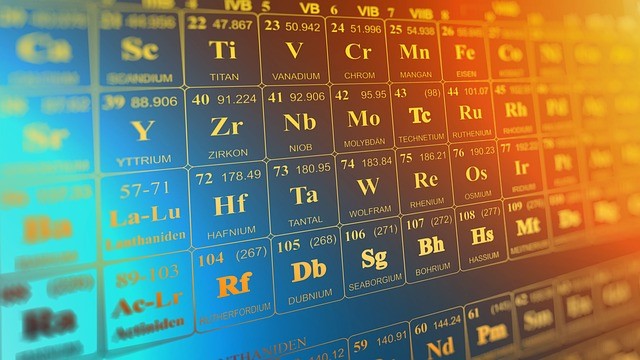Heavy metal chemicals are naturally occurring elements that are poisonous at relatively low concentrations. Here are some examples:
- Lead (Pb)
- Cadmium (Cd)
- Mercury (Hg)
- Arsenic (As)
- Chromium (Cr)
- Thallium (Ti)

Heavy metal chemicals have been a topic of concern in the production of consumer goods for decades. These chemicals are known to be detrimental to human health and the environment. Several regulations limit their use in products such as RoHS, REACH, ELV, and California Proposition 65.
Heavy metal chemicals are naturally occurring elements that are poisonous at relatively low concentrations. Here are some examples:

Additionally, their toxicity is prevalent due to their bioaccumulative properties. This aspect prevents their elimination from the body and is dangerous to various components of human health. Indeed, since these heavy metals accumulate in the body, a minimal concentration will trigger harmful effects. Moreover, these heavy metal chemicals are not limited to a specific industry or product. They are in many consumer goods, including:

Products | Heavy Metal Chemicals | Health Risks |
|---|---|---|
Electronic equipment and vehicles | Various such as Lead, Cadmium, Mercury, Nickel, Hexavalent Chromium |
|
Batteries | Lead, Mercury | Anemia, brain cell damage, kidney impairment |
Glass products, paint | Lead | Anemia, brain cell damage, kidney impairment |
Cosmetics and Makeup | Various such as Lead and Cadmium | Skin irritation and allergic reactions |
Rice Cereals | Arsenic | Cancer, cardiovascular disease, developmental delays in children |
Dark Chocolate | Lead, Cadmium | High blood pressure, kidney damage, decreased fertility. |
Dark chocolate is a popular treat enjoyed by millions worldwide. However, studies have found that certain brands contain high levels of lead and cadmium. Importantly, these heavy metal chemicals can enter the chocolate from the soil and water used in cocoa cultivation. They can also come from processing and packaging equipment.
Exposure to lead and cadmium has been linked to several health issues, including high blood pressure, kidney damage, and decreased fertility.
To further elaborate, lead is structurally similar to other metals such as calcium, iron, and zinc. These minerals participate in many essential biochemical reactions in the human body. For example, calcium assists in bone development and the transmission of electrical impulses in the brain. Also, iron is needed for hemoglobin to carry oxygen throughout the body via the blood. Nevertheless, the body will preferentially use lead over these other metals, making it very toxic.

The World Health Organization (WHO) has established guidelines for the maximum levels of these heavy metal chemicals in food products, including chocolate. However, these guidelines are not legally binding and not always followed.
Rice cereals are present in the diets of many adults and children. Nonetheless, some studies have found that rice cereals can contain high levels of arsenic, a heavy metal chemical harmful to human health. Namely, arsenic can enter rice from the soil and water, as well as from pesticides and fertilizers.
Furthermore, significant arsenic exposure leads to:
The US Food and Drug Administration (FDA) has established guidelines for the maximum levels of arsenic in rice products, but these guidelines are not always applied.

There is a worldwide use of cosmetics and makeup products. Nevertheless, some studies have found that these products can contain high levels of heavy metal chemicals.
One can find these chemicals in a range of cosmetics and makeup products, including:
Exposure to heavy metal chemicals in cosmetics and makeup can lead to skin irritation and allergic reactions.
The EU Cosmetics Regulation and the US Food and Drug Administration (FDA) have established guidelines for the maximum levels of heavy metal chemicals in cosmetics and makeup products. However, since these guidelines are not always followed, some products may still contain high levels of these chemicals.

Thankfully, several regulatory frameworks limit the use of heavy metal chemicals in products. These include the RoHS (Restriction of Hazardous Substances) Directive, REACH (Registration, Evaluation, Authorization, and Restriction of Chemicals), ELV (End-of-Life Vehicles) Directive, and California’s Proposition 65 (Safe Drinking Water and Toxic Enforcement Act of 1986) or Prop.65.

It is important to note that these regulations vary in scope and the specific heavy metal chemicals they regulate. Manufacturers and importers should be familiar with the relevant laws and ensure that their products comply.
Any questions? Request your free consultation and see how Enviropass can assist you!